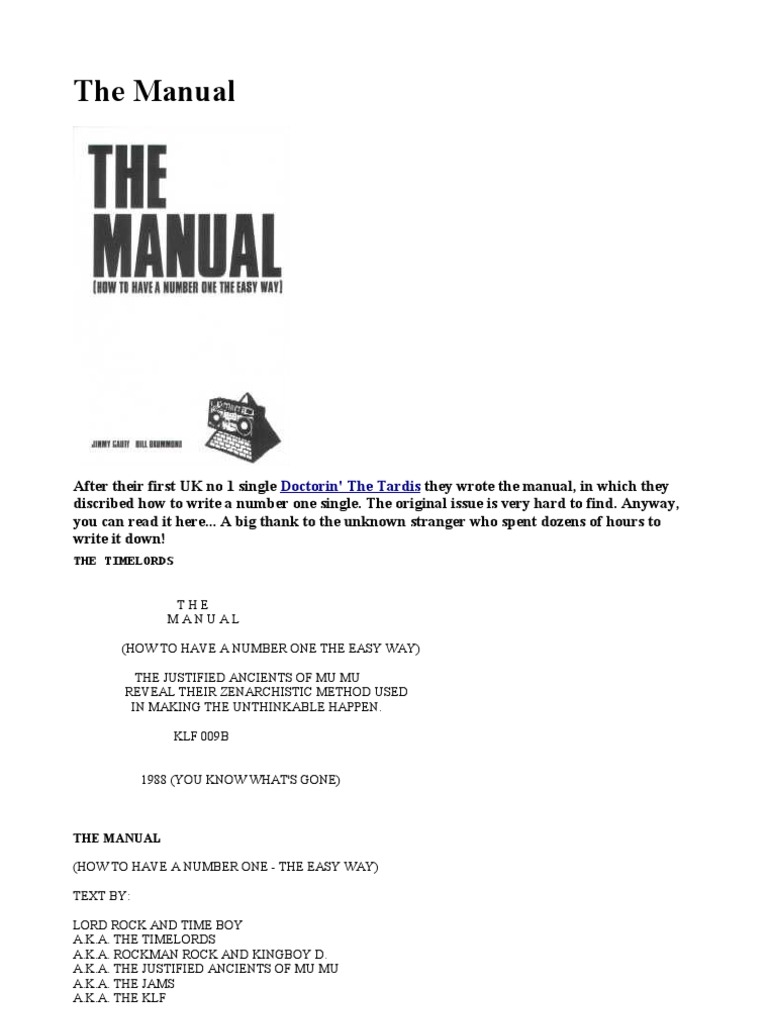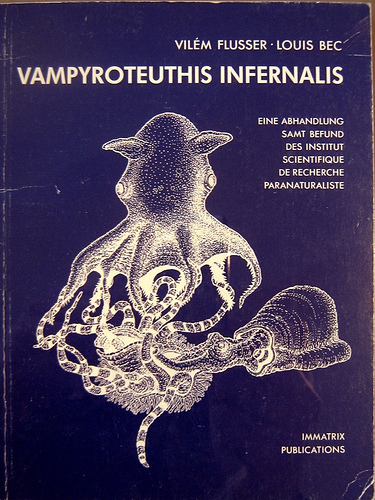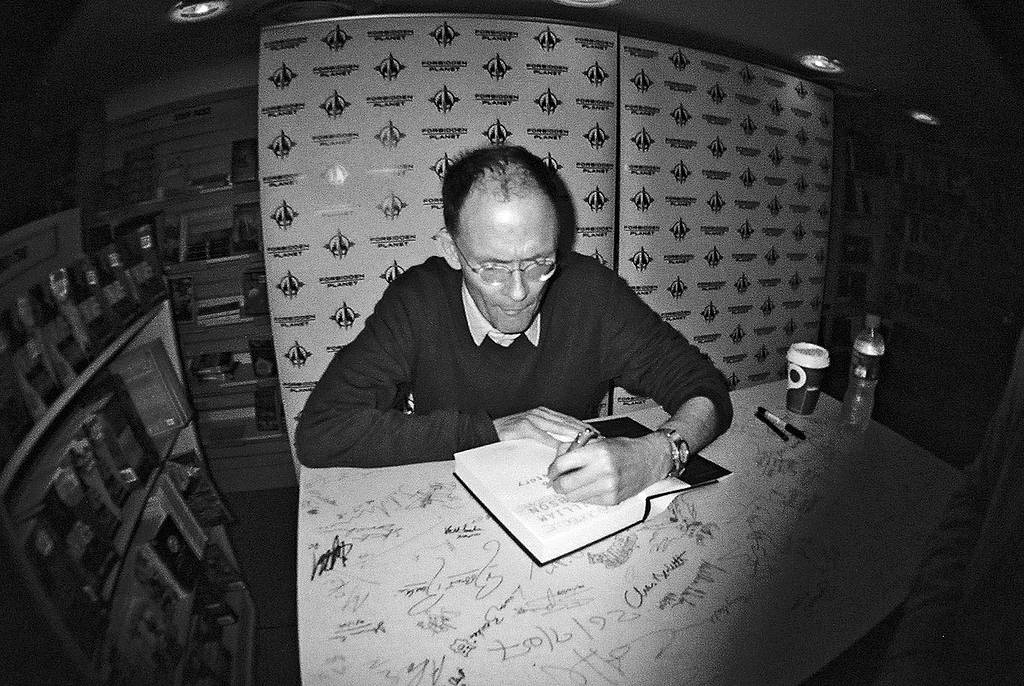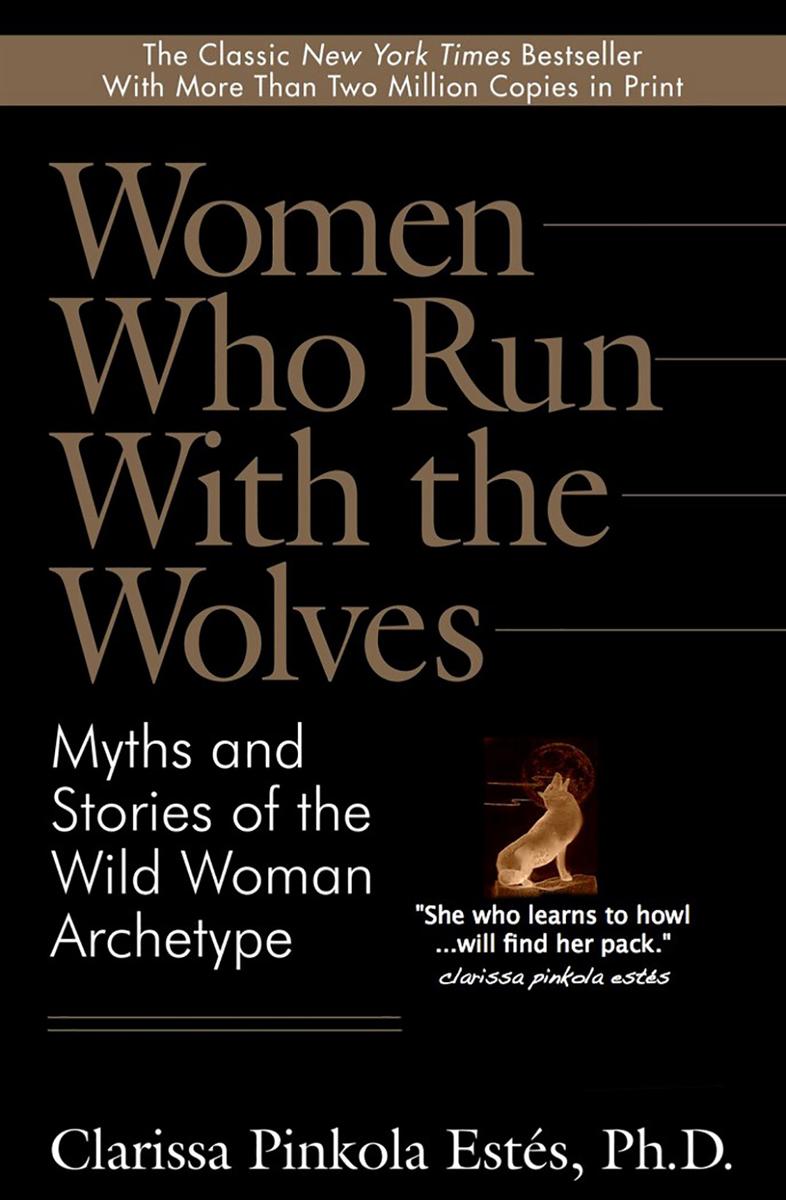How to Have a Number One the Easy Way
The Manual by The KLF
Via Wikipedia: "The Manual (How to Have a Number One the Easy Way) is a 1988 book by "The Timelords" (Bill Drummond and Jimmy Cauty), better known as The KLF. It is a step by step guide to achieving a No.1 single with no money or musical skills, and a case study of the duo's UK novelty pop No. 1 "Doctorin' the Tardis". [...]
The advice dispensed by The Manual includes: 'Firstly, you must be skint and on the dole. Anybody with a proper job or tied up with full time education will not have the time to devote to see it through... Being on the dole gives you a clearer perspective on how much of society is run... having no money sharpens the wits. Forces you never to make the wrong decision. There is no safety net to catch you when you fall.' and 'If you are already a musician stop playing your instrument. Even better, sell the junk.' The book also foretells its own imminent irrelevance, The Timelords admitting that they are writing 'a book that will be completely redundant within twelve months. An obsolete artefact. Its only use being a bit of a social history that records the aspirations of a certain strata [sic] in British society in the late eighties...'
The book is prophetic when it comes to recording technology: "It's obvious that in a very short space of time the Japanese will have delivered the technology and then brought the price of it down so that you can do the whole thing at home. Then you will be able to sod off all that crap about going into studios.'
Bill Drummond explained his motivations in an interview: 'It was an excuse to say a lot of things I wanted to say about how the industry worked. It was an excuse to go out and say to people all they can say to themselves: If you want to do something, go and do it! Don't wait to be asked, don't wait for a record company to come and want to sign you or a management company. Just go and do it. Also, it was saying: If you wanna have number one...you can have it. It won't make you rich, it won't make you happy, but you can have it.' "
Thanks to Marcus Schmickler!









